China Airlines Flight 120 exploded in Japan after a bolt from the slat track came loose and pierced the right-wing fuel tank.
157 passengers and 8 crew members were on the flight from Taiwan to Naha. The flight took one hour and six minutes to land.
After landing, the crew taxied the aircraft to the gate to make sure everything was in order. There was a fire in engine 2 after the pilots shut off the engines.
The air traffic controller was informed by the ground crew that the engine was on fire. The controller told the captain about the situation and he ordered the passenger to leave. The passenger is being evacuated.
The captain made an announcement in Chinese, saying, "Cabin crew, proceed with emergency evacuate immediately after all passengers have been evacuated from the plane."
Everyone on the plane was able to get out through the four hatches using slides. The Captain and First Officer exited the plane through the cockpit window after they ensured that everyone disembarked. The F/O ripped off the escape rope when the number 2 engine and right-wing fuel tanks exploded, as seen in the video below. The captain didn't use the rope to jump. All passengers and crew members were safe.
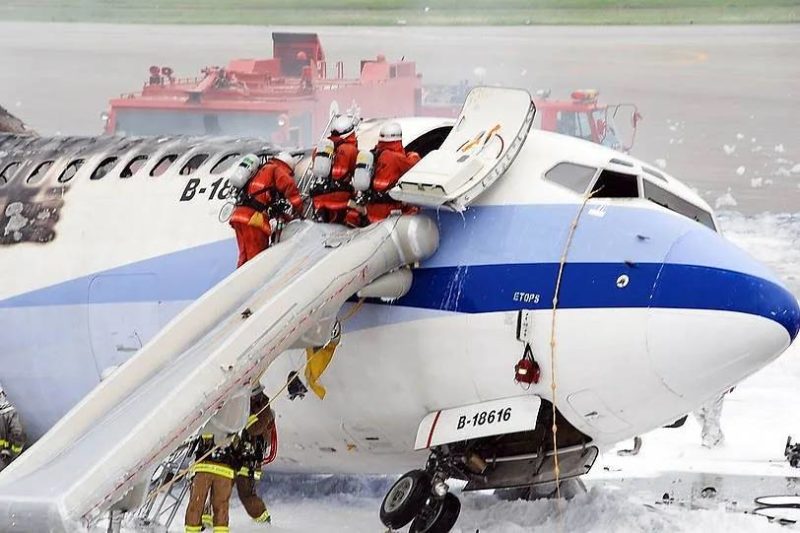
The plane was destroyed by the fire and only part of it was intact. The part was bent longitudinally at the root. The left wing lay over the engine that was resting on the ground. The wing portion between the engine and the fuselage was destroyed by the explosion of the fuel tank. The main landing gear was burned and stood upright, while the wings and engines were on the ground.
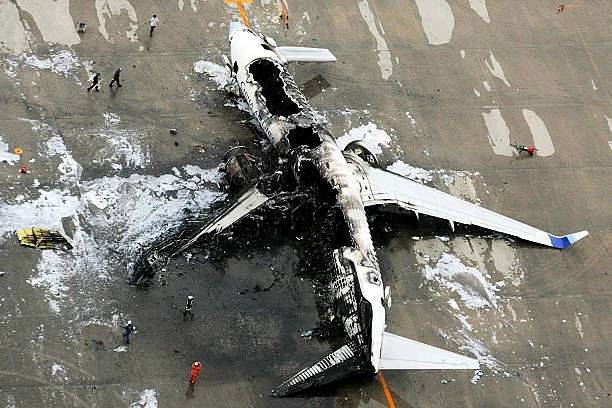
The No. 1 engine was completely destroyed and the No. 2 engine was partially burned. The aircraft was destroyed.
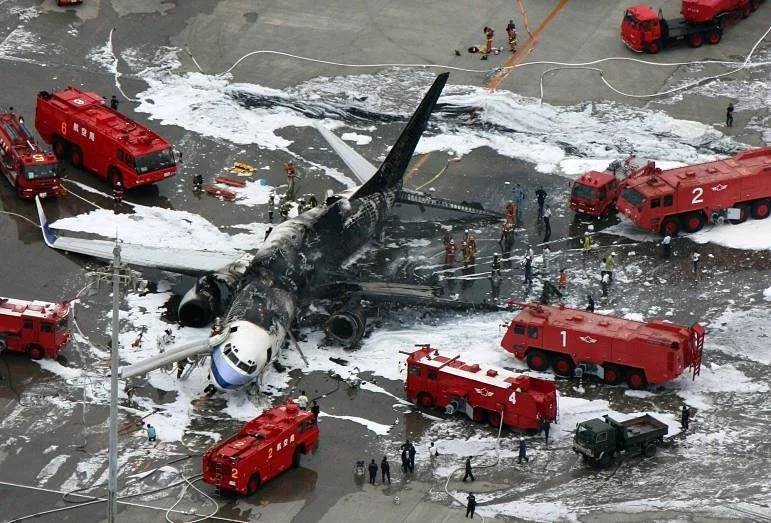
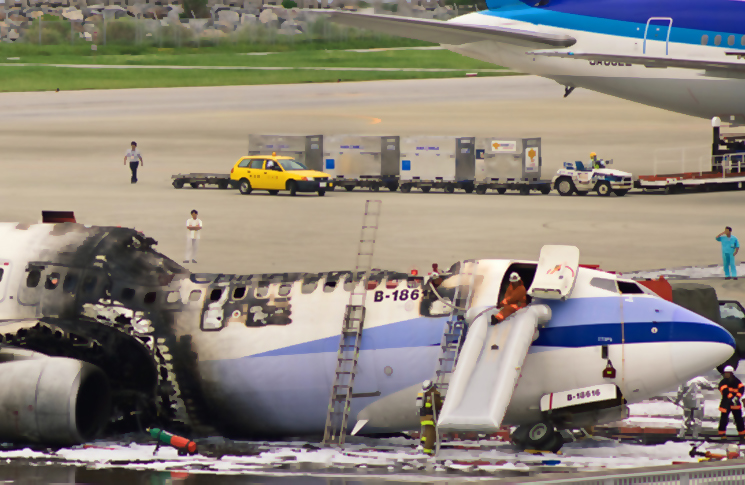
An investigator-in- charge and other investigators were assigned to investigate the accident. The National Transportation Safety Board and Taiwanese Aviation Safety Council were involved in the investigation. The investigation found that the fuel had leaked from a puncture hole.
The captain stated that there was no fire indication after the landing. The recording in the cockpit voice recorder shows that the pilots didn't notice any problems before the incident.
There was no fire alarm or the like during the pre-flight check of the aircraft, during the flight or after the landing. I found no indication of abnormal fuel consumption during the flight, either. Everything was normal until the accident.
Captain, China Airlines Flight 120
An incorrect bolt in the right-wing of the aircraft's No 5 slat down-stop was to blame for the incident. The aircraft had undergone scheduled maintenance from July 6 to 13, 2007, and the bolt was Torqued without the required washer. The entire down-stop assembly fell onto the track of the slat-can assembly as a result of the nut working itself loose.
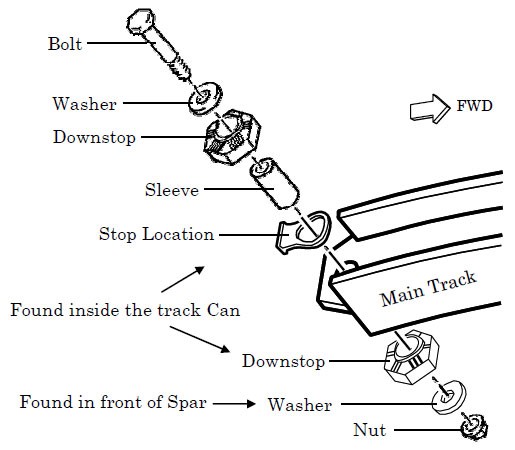
The track can was pushed back into it by the slat track during taxiing. The downstop bolt was pushed through the wall of the track can by the power of the slat actuator.
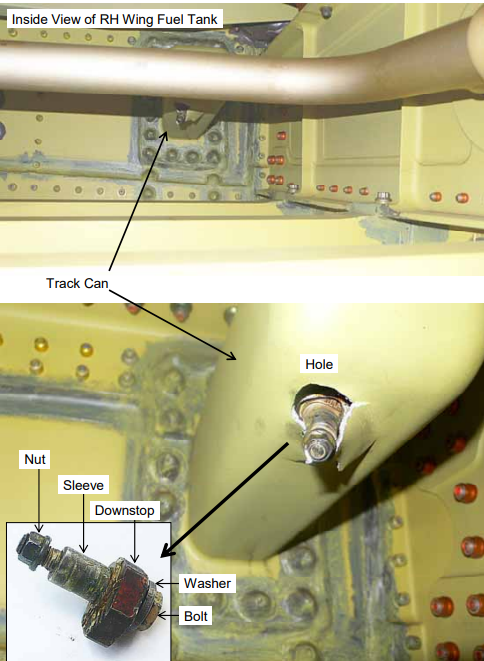
The fuel leaked out through a small hole. There was a fire when jet fuel came into contact with high- temperature areas on the right engine. There was no sign of fuel leaking during taxiing as much of the fuel burned out. The cause of the fire and explosion was a missing washer, according to investigators. The washer was found by the main track as it passed through the wing forward spar.
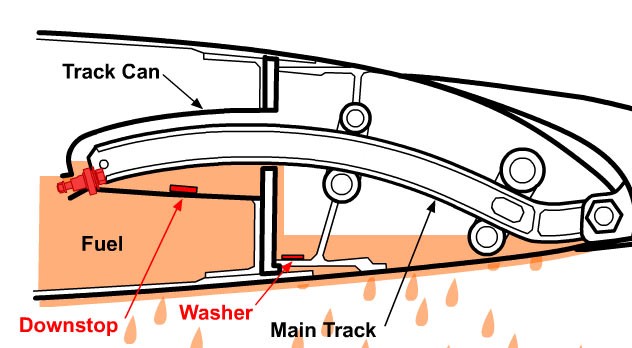
The entire fleet of Boeing 757s of China Airlines, Mandarin Airlines, and the Republic of China Air Force were stopped for further inspection. The Japanese Civil Aviation Bureau asked the operators of the planes to check their planes. The aircraft came back to service after no problems were found.
The US Federal Aviation Administration should supervise Boeing to make sure that maintenance instructions take into account the conditions under which the work must be done. The Civil Aviation Bureau of Japan received a recommendation as well.
China-Airlines-Flight-120-Investigation-ReportDownloadThe cover image is AP.